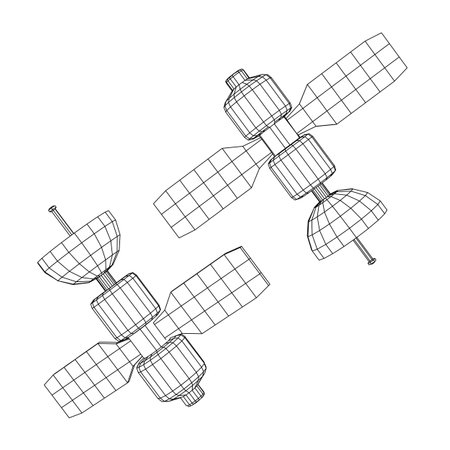1. Introduction: Setting the Cross-Cultural Stage
In recent years, Bazi—also known as the Four Pillars of Destiny—has sparked growing curiosity among Western audiences. Rooted in ancient Chinese philosophy, Bazi uses a unique combination of “Heavenly Stems” and “Earthly Branches” to interpret personality traits, life events, and even destiny itself. While it originated thousands of years ago in China, this complex system is now being embraced by people in the United States who are searching for new ways to understand themselves and their lives.
Why has Bazi become so attractive to Westerners? The answer lies in its promise to unlock self-knowledge and offer personal guidance, something that resonates deeply within American culture’s ongoing search for meaning and self-improvement. At the same time, the adaptation of Bazi in the U.S. is not simply a matter of translation—it involves a fascinating process where Eastern philosophies blend with Western values and expectations.
Key Reasons for Bazi’s Appeal in the West
| Aspect | Eastern Perspective | Western Perspective |
|---|---|---|
| Self-Discovery | Understanding one’s fate and character through cosmic patterns | Personal growth, self-help, finding purpose |
| Guidance for Life Decisions | Choosing auspicious dates, career paths, relationships | Seeking advice for life planning and major choices |
| Mystique & Tradition | Cultural heritage passed down generations | Interest in ancient wisdom and spiritual exploration |
| Holistic Approach | Harmony with nature and universal cycles | Balance between mind, body, spirit; wellness trends |
Bazi Meets American Culture
The American landscape is already rich with diverse spiritual practices—everything from astrology to mindfulness meditation has found a home here. Bazi fits right in, offering a fresh perspective that feels both exotic and practical. However, as Bazi makes its way into mainstream conversations, it undergoes subtle transformations. American practitioners may simplify traditional terms or reframe them using familiar language, making the concepts more accessible without losing their original depth.
An Evolving Conversation
This cross-cultural journey isn’t just about Americans adopting an Eastern tool—it’s about creating a dialogue between two worlds. As we explore how Bazi adapts under Western cultural influences, we set the stage for a deeper understanding of both traditions and how they can enrich each other.
2. Bazi’s Foundations: An Age-Old System Meets the Modern West
What is Bazi? A Snapshot for Western Readers
Bazi, also known as the Four Pillars of Destiny, is a traditional Chinese system that interprets a person’s fate and personality by analyzing their birth date and time. At its core, Bazi uses two main elements: Stems and Branches. These are ancient concepts rooted in Chinese cosmology, representing cycles of nature and energy. But what exactly are they, and why do they spark such curiosity in the West?
The Basics: Stems and Branches Explained
| Element | Chinese Name | Count | Simple Explanation |
|---|---|---|---|
| Heavenly Stems | Tian Gan | 10 | Basic building blocks, each linked to an element (Wood, Fire, Earth, Metal, Water) and a polarity (Yin or Yang) |
| Earthly Branches | Di Zhi | 12 | Correspond to the 12 animals of the Chinese zodiac and cycles in nature (like months or hours) |
How Does Bazi Work?
Bazi charts are made by matching four pairs of Stems and Branches—one pair each for the year, month, day, and hour of birth. This creates a unique “blueprint” for every individual. In China, people use these charts to gain insights into their strengths, relationships, career paths, and even health tendencies.
The Western Perspective: Challenges and Curiosities
When Bazi is introduced to Western audiences, several interesting challenges pop up:
- Cultural Translation: Concepts like “Yin” and “Yang,” or the deep symbolism of elements, don’t always have direct Western equivalents. This can lead to misunderstandings or oversimplifications.
- Scientific Skepticism: Many in the West prefer evidence-based systems. The mystical origins of Bazi can make it seem less credible or harder to accept compared to psychological tools like the Myers-Briggs Type Indicator or astrology.
- Zodiac Confusion: While Westerners are familiar with zodiac signs (Aries, Taurus, etc.), the 12-animal cycle of Chinese astrology offers new symbols and stories—some find this fascinating, others find it confusing.
- Personalization: Westerners often value individuality. They’re intrigued by how Bazi offers highly personalized readings based on exact birth details rather than broad categories.
A Quick Comparison: Bazi vs. Western Astrology
| Bazi (Four Pillars) | Western Astrology |
|---|---|
| Based on year, month, day, hour of birth; uses elements and animal signs; focuses on energy cycles | Based on sun sign (month of birth); uses planets and star signs; focuses on personality traits and destiny paths |
| Emphasizes balance of Yin/Yang and five elements (Wu Xing) | Emphasizes planetary influences and four elements (fire, earth, air, water) |
| Rooted in Chinese philosophy and metaphysics | Rooted in Greek/Roman mythology and astronomy |
Bazi’s Allure: Why Westerners Are Drawn In
The growing interest in holistic wellness and self-discovery has made Bazi appealing to many Americans seeking new ways to understand themselves. Its blend of philosophy, symbolism, and personalized insight offers a fresh perspective outside typical Western frameworks. As more people explore cultural traditions from around the world, Bazi continues to intrigue those looking for deeper meaning behind their life stories.

3. Bridging Worlds: Why Bazi Appeals to Western Seekers
Bazi, also known as the Four Pillars of Destiny, has found a surprising following in the United States. While it comes from ancient Chinese philosophy, many Americans are discovering its relevance in their modern lives. What makes Bazi so attractive to people in the West? Let’s explore the key reasons behind its growing appeal.
The Search for Meaning and Self-Discovery
Many Americans are on a quest for deeper meaning in life. In a fast-paced culture where success is often measured by material achievements, there’s a growing desire to understand one’s true self and life purpose. Bazi offers a unique roadmap, using birth data to reveal patterns about personality, strengths, and challenges. This aligns with Western interests in self-help, personal growth, and psychology.
How Bazi Aligns with Western Values
| Bazi Feature | Western Value or Trend | How They Connect |
|---|---|---|
| Personal Blueprint (based on birth date) | Individualism | Emphasizes each person’s unique path and potential |
| Focus on Self-Awareness and Growth | Self-Improvement | Encourages reflection and proactive change |
| Holistic Approach (mind, body, fate) | Wellness & Mindfulness | Fits into trends like yoga, meditation, and holistic health |
| Balance of Elements (Yin/Yang, Five Elements) | Desire for Balance in Life | Resonates with seeking work-life balance and harmony |
| Destiny vs. Free Will Discussion | Philosophical Inquiry | Sparks interest in life’s big questions: fate or choice? |
Bazi as a Holistic Tool for Modern Life
Bazi doesn’t just predict the future; it helps people make better decisions today. Americans appreciate practical tools that guide career choices, relationships, and health—areas where Bazi offers insights. Its focus on balancing different elements can feel refreshing compared to rigid personality tests or generic advice.
The Appeal of Cross-Cultural Wisdom
For many Americans, exploring Bazi is also about embracing diversity and learning from other cultures. The U.S. values openness and curiosity—traits that lead people to adopt new perspectives like Bazi. It allows individuals to blend Eastern wisdom with Western lifestyle, creating a personalized approach to growth and fulfillment.
4. Adaptation and Fusion: Reinterpreting Bazi in American Culture
As Bazi, the ancient Chinese system of “stems and branches,” makes its way into the American cultural landscape, it undergoes fascinating transformations. The core ideas—understanding one’s destiny through birth data and natural cycles—appeal to a broad audience in the U.S., but they are often reimagined to fit local tastes, trends, and values.
Blending with Pop Culture and Self-Help Movements
In recent years, Americans have shown growing interest in astrology, personality tests like Myers-Briggs, and self-improvement tools. Bazi finds its place in this mix as both a spiritual guide and a personality decoder. Some practitioners market Bazi readings alongside horoscopes or as an “Eastern Zodiac,” making it more relatable for those already familiar with Western astrology. Meanwhile, influencers and coaches may incorporate Bazi terminology into self-help workshops or online courses, positioning it as a roadmap for personal growth, career advice, or relationship compatibility.
Examples of Creative Adaptations
| American Context | Bazi Element | How Its Adapted |
|---|---|---|
| Pop Culture | Heavenly Stems & Earthly Branches | Compared to zodiac signs; used in memes and social media quizzes |
| Self-Help Seminars | Bazi “Day Master” | Presented as a tool for discovering life purpose or leadership style |
| Spiritual Wellness Retreats | Five Elements Theory | Tied into yoga sessions or mindfulness practices for holistic balance |
| Online Dating Platforms | Bazi Compatibility Analysis | Marketed as an alternative to traditional matchmaking algorithms |
Navigating Misinterpretations and Challenges
While these adaptations can be creative and fun, misunderstandings often arise. For instance, some people treat Bazi as just another horoscope, missing its depth and the importance of context like family history or environmental factors. Others might combine Bazi elements with unrelated New Age practices without recognizing their distinct origins. This fusion sometimes leads to oversimplified interpretations—such as reducing someone’s fate to just their Day Master element—without appreciating the complexity of the full Bazi chart.
Mainstream vs. Traditional Approaches: A Comparison
| Bazi in Traditional Chinese Culture | Bazi in American Pop Culture |
|---|---|
| Detailed analysis by trained experts Context includes ancestors, cycles, environment Focus on balance and harmony over time Used for major life decisions (marriage, business) |
Quick personality readings Emphasis on individual traits or instant results Blended with astrology or self-help language Often used for fun or light guidance |
The Road Ahead: Ongoing Evolution
Bazi’s journey in America is still unfolding. As more people explore cross-cultural spiritual practices, new forms of adaptation—and occasional misinterpretation—are likely to emerge. The key is finding a respectful balance between creative fusion and honoring the original wisdom behind the stems and branches.
5. Looking Ahead: Bazi’s Role in America’s Evolving Spiritual Landscape
Bazi, also known as the Four Pillars of Destiny, has started to make its mark in the United States. As Americans continue to explore diverse spiritual practices, Bazi finds itself woven into a tapestry of multicultural beliefs and personal journeys. So, what could the future look like for Bazi in the U.S.? Let’s take a closer look at how it might shape—and be shaped by—America’s ever-changing spiritual landscape.
Embracing Multiculturalism Through Bazi
America is often described as a melting pot of cultures. As more people seek meaning beyond traditional Western frameworks, practices like Bazi offer fresh perspectives. Here’s how Bazi could contribute to multiculturalism:
| Aspect | Potential Impact of Bazi |
|---|---|
| Cultural Exchange | Fosters understanding between Eastern and Western communities |
| Diversity in Practice | Adds variety to spiritual options available in the U.S. |
| Community Building | Creates new spaces for people to connect over shared interests |
Identity and Self-Discovery: Bazi in Personal Growth
Bazi offers a unique way for individuals to explore their identity and life path. Instead of looking only at external factors, it encourages people to reflect on their inner nature through elements like wood, fire, earth, metal, and water. In a society that values individuality and self-expression, this approach resonates with those searching for deeper self-understanding.
How Americans Might Use Bazi for Self-Discovery
- Understanding personal strengths and weaknesses
- Navigating career or relationship choices
- Finding purpose during times of transition or uncertainty
The Conversation Between East and West: Blending Approaches to Destiny
Bazi introduces an alternative perspective on fate and free will compared to common Western ideas. While some Americans may see destiny as something fixed or predetermined, others appreciate the idea of working with life’s energies to create positive change. This conversation opens doors for blending philosophies from both sides of the world.
| Eastern (Bazi) | Western Traditions |
|---|---|
| Focus on cycles, balance, and harmony with nature’s elements | Focus on individual choice, psychology, and self-actualization |
| Destiny seen as influenced by both birth chart and actions | Destiny often viewed as open-ended or self-created |
| Emphasis on interconnectedness between people and environment | Emphasis on personal responsibility and autonomy |
Bazi’s Place in America’s Spiritual Future
Bazi is likely to keep evolving as it adapts to American values and lifestyles. Workshops, online courses, and bilingual resources make it more accessible than ever before. As more practitioners emerge and blend Bazi with other tools—like astrology or mindfulness—it will continue shaping conversations about destiny, identity, and cultural exchange across the nation.


